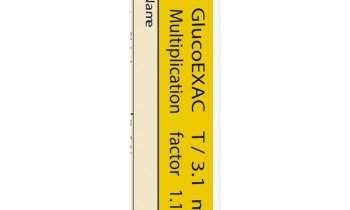Changing approaches to wound management
Mark Nicholls reports on practices and products
In recent years wound management has been primarily nurse-led, and not benefited from a multi-disciplinary approach. This must change, said Madeleine Flanagan, Principal Lecturer at the University of Hertfordshire's school of Post Graduate Medicine in the faculty of health and human science, where she runs the MSc in Dermatology and an MSc in Skin Integrity; she is also Principal of the European Wound Management Association curriculum development project.
‘Across Europe, there is rising incidence of obesity and diabetes, which will increase the numbers of chronic wounds in the future, but we currently haven’t the appropriate inter-professional, integrated skin integrity services to meet these demands,’ she pointed out, adding that there is an urgent need to raise the profile of wound management and skin integrity so that these issues receive greater recognition as a more important part of the overall treatment of the patient, including the need to provide better training, have earlier recognition of wound issues and design relevant and effective referral pathways to provide a more cohesive approach that involves the whole medical team.
This is ever more important, particularly where wounds are managed in patients’ homes with the growing emphasis on moving care away from acute hospitals. Ms Flanagan added: ‘With some complex wounds such as diabetic foot ulcers, the prognosis is good where we have dedicated services. Diabetic foot clinics in Europe have demonstrated that patients can be successfully and cost-effectively managed with less devastating outcomes such as amputation if patients are referred earlier.’
Over the last 20 years, wound care products have evolved significantly from gauze dressing, used for 150 years to the 1980s. Since then, more innovative and technologically advanced products have included foam, anti-microbial wound dressings, moist wound care and hydrocolloid dressings that combine the benefits of conventional dressings with those that promote the principle of moist wound healing.
Negative pressure wound therapy is also used more frequently to manage chronic, non-healing wounds. In this a vacuum is used to apply pressure to the wound bed and draw out excess fluid and cellular waste to promote healing and fight infection.
There are other developments. Until now effective ingredients that promote healing always had to be applied to the site, independent of the wound compress. A new wound compress, in development at the Hohenstein Institute in Boennigheim, Germany, integrates and continually delivers effective ingredients on the basis of Nanosol technology, to speed up healing, simplify treatment and reduce the time required for care.
According to a report from research analysts Frost & Sullivan, Europe’s advanced wound management market is experiencing high growth due to the heightened need for better and more cost-effective treatments. The 2008 revenues reached $1.52 billion; F&S estimates they will reach $4.35 billion in 2015.
01.07.2009









